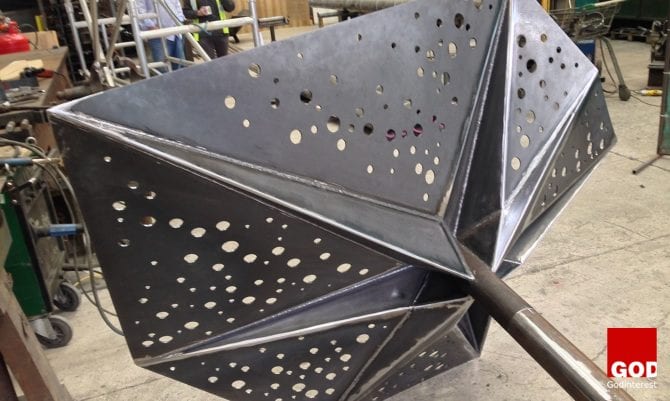7 Secret Things You Didn’t Know About Successful Procurement Teams
Some senior members of staff see procurement expenses as a necessary evil and overlook any efficiency improvement methods for this sector. This is not an uncommon way of thinking, as procurement and the supply chain is a massive part of any company’s costs and can total up to 70% of an organisation’s total spend.
These managers are missing out on effective changes that can shift procurement to a significant supplier of growth and profit for any business.
Follow these 7 steps to improve your procurement team.
1. Embrace Change
It’s so important for procurement managers to embrace and invest in technology changes currently taking place in the industry.
Managers should hold a full assessment of deficiencies in their processors and search for technology that meets the needs of the business, rather than fitting the business around new technology. For example, if you are having trouble with historic and retrospective analysis, invest in predictive analytics.
2. Consider Outsourcing
Outsourcing may not be an avenue you have ever considered in regards to procurement, even though it happens all the time with HR and IT departments. Even so, many procurement managers are still apprehensive to apply it to their supply chain.
Outsourcing certain aspects of procurement can be a way of improving existing systems and processors rather than a cost reduction measure. It can also allow your business to access highly skilled procurement experts when it would be counter-productive to hire someone internally. These individuals are often very focused on delivering results, and if you plan outsourcing correctly, the increase in productivity will outweigh the costs of outsourcing.
If a procurement manager feels like there are areas in the business where costs can be cut, it might be worth bringing in a consultant. There are also outsourcing services that offer expert domain knowledge and vendor contact opportunities.
3. Ensure Your Supply Chain Is Properly Staffed
The efficiency of a supply chain is very much dependent on the quality of its staff. As a procurement manager, it’s important to ensure that the supply chain is staffed with highly skilled individuals, and that these staff have regular access to education and training.
Procurement professionals will be tasked with a wide variety of roles, including:
- Planning delivery timetables
- Ensuring stores have enough stock
- Overseeing the arrival of shipments
When hiring employees, it’s important to ensure they have skills such as communication, attention to detail and teamwork. They must also be willing to learn and improve throughout their career.
4. Create Risk Management Policies
One of the key ways of making a procurement team more efficient is to prepare for the unexpected. Procurement managers should establish proper levels of control to manage risk and ensure that all these policies are periodically reviewed. These risk management fail safes should include:
- The financial impact a risk might have
- The likelihood to the risk occurring
- A priority list for managing risks
All staff members should be aware of these risks, and the processes in place if the risks occur. For example, if a major supplier goes out of business, your staff should be aware that there is a process for contacting secondary suppliers so you are never left without stock.
5. Establish Relationships with Key Suppliers
Staff who deal with suppliers on a daily basis need to have brilliant relationship building skills. Procurement employees need to work closely with suppliers to try and keep communication consistent and amicable, even if issues arise at either end.
Suppliers can help procurement teams reach their performance goals, and they are often very knowledgeable, with expertise to share about their products. Procurement teams can learn a lot from them, like the audience, seasonality and key selling points of products; it’s worth working on these relationships.
6. Stick to Ambitious but Manageable Targets
If a team has a tough but not unattainable goal to work towards they can prioritise, measure and focus on their tasks with a clear end in mind. This helps staff members feel more motivated and gives meaning to their work.
There will also be a sense of achievement when the targets are met, bringing your team closer together and improving teamwork.
7. Efficiency Is Attainable
The creation of a brilliant supply chain depends on your company’s understanding of procurement, along with the procurement team’s estimation of the total costs associated with each supplier and their contacts.
With help from technology, outsourcing, a great team and strong relationship building skills, your procurement team should improve its efficiency and business impact.
How Technology Has Changed Procurement in the Last 10 Years

Over the past decade business procurement has experienced rapid technological upheaval that, in the main, has made life easier for everyone involved.
The first ever Global Procurement Technology Summit was held in March 2016. It shows the emphasis procurement is now putting on understanding and utilising new technologies, and that it’s clearly a huge talking point for professionals across the world.
Looking in greater detail: which technology has been responsible and what has the effect been on procurement and buying professionals?
1. More informed decisions are being made
The digitalisation of procurement processes and integration of data-sharing across buyer behaviour, ratings and history of purchases over extended periods of time, has made for smarter and more informed decisions.
Despite the greater insight into decision-making, a study of US procurement professionals still revealed accurate forecasting to be the biggest challenge, something that’s possibly down to the rise in budget responsibilities over the last ten years.
The Coupa ‘Top 5: Constants and Change in Cloud Procurement’ report revealed that in 2003, budgets were reported as an average of $31m, compared to $100m in 2013.
2. Response times have drastically reduced
Procurement solutions are now quicker and easier than ever thanks to new marketplace technologies.
Buyers can take advantage of online purchasing possibilities, using websites like Amazon to source, purchase and arrange delivery of items.
The speed of procurement reflects the new speed in which consumerism moves ’’ the integration of digital mediums with online shopping has made the process of deliberation through to transaction much easier, a trend which has been reflected in the world of procurement.
3. Integration has brought its own problems
Technological integration has created many positives for procurement, but it’s also created challenges.
Millennials will make up 40% of the workforce by 2020, which is great for improving current procurement solutions as younger generations have higher expectations for technology and are early adapters.
However, the average age of procurement professionals in the UK is currently 44 – much older than the next generation of workers, who fully understand the capabilities of technology, and who will be easier to train and able to work with increased speed and accuracy.
The gap will close in the coming years, but procurement faces a struggle as older workers need to ensure their skills are relevant to the changing world around them.
Additionally, Hays’ ‘Procurement Salary Guide’ revealed that demand for procurement professionals has increased at all levels within the public sector, pushing salaries up. This demand is the result of a squeeze on public finances and attempts to cut costs following the slowdown in the economy.
4, Technology and the future of procurement
To conclude, technology is clearly a powerful enabler that’s here to stay. Plenty of companies are now seeing the importance of procurement technology as a means to improve their bottom lines, which was reflected in the inaugural Global Procurement Technology Summit earlier this year.
Integration of contract management, risk management and supplier lifecycle systems through investment in improved systems with added capabilities, has ensured more accurate sourcing is possible and due to the skills involved in running these systems, has driven salaries up.
Sophia Chapman is a guest contributor from Portfolio Procurement, expert recruiters in the compensation, benefit and reward sector.
The Nature of Good ‘Project Chemistry’
Has Nigeria Become the World’s Junk Yard of Abandoned and Failed Mega Projects worth Billions?
Dim1, N. U., Okorocha2, K. A., & Okoduwa3 V. O.
The Nigerian construction industry is mostly concerned with the development and provision of projects such as roads, bridges, railways, residential and commercial real estates, and the maintenance necessary for the socio-economic developments contributes immensely to the Nigerian economic growth (Bureau of Statistics, 2015). Butcher and demmers (2003) described projects as an idea which begins and ends by filling a need. However, a project fails when its idea ends without meeting the needs and expectations of its stakeholders.
Nigeria Has Become the World’s Junk – Yard of Abandoned and Failed Projects worth Billions of Naira!
Hanachor (2013), revealed that projects form part of the basis for assessing a country’s development. However, a damming report from the Abandoned Projects Audit Commission which was set up by the Ex-President Goodluck Jonathan in 2011 revealed that 11,886 federal government projects were abandoned in the past 40 years across Nigerian (Abimbola, 2012). This confirmed the assertion by Osemenan (1987) “that Nigeria has become the world’s junk –yard of abandoned and failed projects worth billions of naira”.
Abandoned projects including building and other civil engineering infrastructure development projects now litter the whole of Nigeria.
Physical projects do not only provide the means of making life more meaningful for members of the community where the projects are located, successful projects also result in empowerment and collective action towards self improvement (Hanachor, 2013).
This Issue of Abandonment Has Been Left Without Adequate Attention for Too Long, and Is Now Having a Multiplier Effect on the Construction Industry in Particular and the Nigeria’s National Economy as a Whole. (Kotngora, 1993)
PROJECT FAILURE
Project Failure might mean a different thing to different stakeholders. A project that seemed successful to one stakeholder may be a total failure to another (Toor and Ogunlana, 2008). Some stakeholders, more especially the project users and some private owners, think of failed projects as a situation where a completed building project collapsed, a situation where by a completed dam project stopped working after few days of completion, or a completed road project that broke down after few months of completion. Other experienced stakeholders, such as engineers and architects conform to the iron triangle by Atkinson (1999) which states that the most strategically important measures of project failure are “time overrun”, “cost overrun”, and “poor quality”.
Turner (1993) noted that a project fails when the project specifications are not delivered within budget and on time; the project fails to achieve its stated business purpose; the project did not meet the pre-stated objectives; the project fails to satisfy the needs of the project team and supporters; and the project fails to satisfy the need of the users and other stakeholders. Lim and Mohamed (1999) cited in Toor and Ogunlana (2009) clarified that there are two possible view points to project failure namely; the macro-level and the micro-level. They further explained that the macro view point reviews if the original objectives and concepts of the project was met. Usually the end users and the project beneficiaries are the ones looking at the project failure from the macro view point, where as the project design team, the consultants, contractors, and suppliers review projects from a micro view point focusing on time of delivery, budget, and poor quality.
In the early 1990s, the failure as well as the success of any project was determined by the project duration, monetary cost, and the performance of the project (Idrus, Sodangi, and Husin, 2011). Belout and Gauvrean (2004), also confirmed that the project management triangle based on schedule, cost, and technical performance is the most useful in determining the failure of a project. Moreover, a project is considered as an achievement of specific objectives, which involves series of activities and tasks which consume resources, are completed within specifications, and have a definite start and end time (Muns and Bjeirmi 1996, cited in Toor and Ogunlana, 2009). Reiss (1993) in his suggestion stated that a project is a human activity that achieves a clear objective against a time scale. Wright (1997) taking the view of clients, suggested that time and budget are the only two important parameters of a project which determines if a project is successful or failed. Nevertheless, many other writers such as Turner, Morris and Hough, wateridge, dewit, McCoy, Pinto and Slevin, saarinen and Ballantine all cited in Atkinson (1999), agreed that cost, time, and quality are all success as well as failure criteria of a project, and are not to be used exclusively.
FACTORS OF PROJECT FAILURE
Cookie-Davies (2002) stated the difference between the success criteria and the failure factors. He stated that failure factors are those which contributed towards the failure of a project while success criteria are the measures by which the failure of a project will be judged. The factors constituting the failure criteria are commonly referred to as the key performance indicators (KPIs).
Time and Cost Overrun
The time factor of project failure cannot be discussed without mentioning cost. This is because the time spent on construction projects has a cost attached to it. Al-Khali and Al-Ghafly, (1999); Aibinu and Jagboro, (2002) confirmed that time overrun in construction projects do not only result in cost overrun and poor quality but also result in greater disputes, abandonment and protracted litigation by the project parties. Therefore, focus on reducing the Time overrun helps to reduce resource spent on heavy litigation processes in the construction industry (Phua and Rowlinson, 2003). Most times, the time overrun of a project does not allow resultant system and benefits of the project to be taking into consideration (Atkinson, 1999). Once a project exceeds the contract time, it does not matter anymore if the project was finally abandoned or completed at the same cost and quality specified on the original contract document, the project has failed. Furthermore, Assaf and Al-Hejji, (2006) noted that time overrun means loss of owner’s revenue due to unavailability of the commercial facilities on time, and contractors may also suffers from higher over heads, material and labour costs.
Poor quality/Technical Performance
The word “Performance” has a different meaning which depends on the context it is being used and it can also be referred to as quality. Performance can be generally defined as effectiveness (doing the right thing), and efficiency (doing it right) (Idrus and Sodangi, 2010). Based on this definition of performance, at the project level, it simply means that a completed project meets fulfilled the stakeholder requirements in the business case.
CAUSES OF PROJECT FAILURE
A lot of research studies have investigated the reasons for project failures, and why projects continue to be described as failing despite improved management. Odeh and Baltaineh, 2002; Arain and Law, 2003; Abdul-Rahman et al., 2006; Sambasivan and Soon, 2007; all cited in Toor and Ogunlana, 2008, pointed out the major causes of project failures as Inadequate procurement method; poor funding and availability of resources; descripancies between design and construction; lack of project management practices; and communication lapses
The contract/procurement method
A result obtained from two construction projects which were done by the same contractor but using different procurement methods showed that rework, on the design part which occurs when the activities and materials order are different from those specified on the original contract document, makes it difficult for the project to finish on the expected time (Idrus, Sodangi, and Husin, 2011). This is as a result of non-collaboration and integration between the design team, contractor, and tier suppliers. The rework on the design portion has a huge impact on project failure leading to the time overrun. The traditional method of procurement has inadequate flexibility required to facilitate late changes to the project design once the design phase of the construction project has been concluded.
Nigerian most widely used procurement method is the traditional method of procurement (design-bid-construct) which has been confirmed to be less effective to successfully delivery of a construction project (Dim and Ezeabasili, 2015). And, the world bank country procurement assessment report (2000) cited in Anigbogu and Shwarka, (2011) reported that about 50% of projects in Nigeria are dead even before they commence because they were designed to fail.
The way the construction projects are contracted, in addition to the way the contracts are delivered, contributes to the causes of projects failure. Particularly, among the methods of project contracting is lump-sum or a fixed-price contracting method, in which the contractor agrees to deliver a construction project at a fixed price. The fixed-price contract can be low-bid or not however, once the contract cost has been agreed upon the contract award, it cannot be changed. And, contractors are expected to honor and deliver the contract agreement, failure to do so can result in a breach of contract which can result in the contractor being prosecuted.
Awarding a contract to an unqualified personnel also contributes to project failures. When a contractor places more emphasis on money and the mobilization fee after a construction project has been initiated instead of getting the right workforce and skilled professionals that will execute the project. Instead the workforce chosen will often not be base on competence and required skills rather it will be based on availability. Moreover, poor strategy and planning by contractors who have overloaded with work also contributed to one of the causes of project failure.
Poor funding/Budget Planning
A lot of public projects in the Nigerian construction industry failed as a result inadequate funding, and the difference between the national annual budget and the budget actual released. Most of the Nigerian public projects are signed even before the actual release of the national budget. The difference in budget of the contracted project and the actual budget release can get the contracted company stuck as a result of inflation of prices, scarcity of construction material at the time of the budget release and mobilization to site. Also un-planned scope of work which can be as a result of the contractor working on another contract when he is called back to mobilization to start work. Moreover, poor budget planning is a regular mistake made by some contractors by not undertaking feasibility assessments before starting the design. The construction project should be planned according to the available resources and not according to the unrealistic expectations a client has in mind.
Discrepancies Between the Design and Construction
Limited collaboration between the contractors, engineers, and the architect results in discrepancies between the project designs and construction on site, and further leads to rework. Changes on a project designs, and changing to the scope of work in the middle of construction processes on site can be dangerous, and can lead to time overrun, increase in cost, and most of all can lead to abandonment. Moreover, many cases have been seen where the designs from the architects are not buildable on site, while In some cases, most contractors are unable to adequately specify the scope of work for the construction processes on site. Therefore any default on the design by the architect can be an opportunity for the contractor to make more money which might cause the project duration to exceed the time specified on the contract document.
RESEARCH METHODOLOGY
This research starts with a general reasoning or theory which says that the major cases of project failure in the Nigerian construction industry are defined based on time overrun and cost overrun. The findings from the data analysis will help on the decision to accept the theory or not. The research data was collected from the progress report for the month ending of October, 2015 published by the Nigeria of Federal Ministry of works on thirty-nine on-going highway construction projects at the South-South geopolitical zone. The table 1 below shows the information on the data collected which comprises of the project title, contract Number, project description, the contractor that was awarded the projects, the date of project commencement, date of completion and the extended date if any. The scheduled time for each project was specified as follows: project commencement date labeled as “a”, project completion date labeled as “b”, and the extended date labeled as “c”.


DATA ANALYSIS
The data analysis was done with the use of Microsoft excel. The analysis started by obtaining the number of days between the date of commencement of each project and the date of completion to show the duration of each highway project. And, the number of days between the project completion date and the extension date showed the time-overrun. The project duration and the extended days were obtained with the use of NETWORKDAYS function in Microsoft Excel which calculates the number of working days between two dates excluding weekends and any dates identified as holidays.
The standard deviation between the specified project duration for each highway projects and the extended days was calculated to obtain the extent to which each highway project contract failed on its time of delivery. This was denoted as the degree of failure. The table 1 above showed the projects ranking which was done based on the degree of failure of all the highway projects. The highway projects that were ranked from one to sixteen have low degree of failure and are represented with green color, while the rest are those with high degree of failure and are represented with red color.
FINDINGS
The findings made showed that the successfully completed highway projects have no extended days or time overrun, and the successful on-going highway projects are still on schedule and have no extended days unlike the on-going highway projects that have already failed as a result of the extended dates. Other projects have been abandoned because they have exceeded the delivery date as specified on the contract document, and have no extended date of completion. Thus, no work is going on.


Figure 2 above showed that 14% of highway projects are still on-going projects because they have not exceeded the original date of completion as specified on the contract document. However, they are heading towards failure because they have been given an extended date of completion which can be as a result of some critical activities running behind schedule, causing delay on the critical path network of the projects. Moreover, the other 86% completely failed because they have exceeded their completion date specified on the contract document.

The figure 3 above showed that 63% of the successful highway projects are still on-going because they have not exceed their completion dates, and they are not yet completed. However, those on-going highway projects might end up as failed projects as a result of poor funding, discrepancy between the design and the construction on site, and conflict between the construction parties or stakeholders.
“Say what you will do, and do what you said” or “Say as you will do it, and do it as you said”
CONCLUSION AND RECOMMENDATION
The idea of knowing what a failed project is, the factors and the causes is very important in project management. Success in project management can neither be achieved nor measured without the knowledge of project failure, its factors, and causes in the Nigerian construction industries. This work has shown that project failure is as a result of exceeded time of delivery, cost overrun, and poor quality. However, the analysis was only done based on exceeded time of project delivery because of the nature of the data collected.
This work suggested a few approaches to help reduce the number of failed projects in the Nigerian construction industry if properly implemented. Firstly, Having good collaboration between the project stakeholders involved in a construction project at the early stage of project conception is most important in order to accomplish the project objectives, and deliver the project on time, within budget, and quality specified on the original contract document (Othman, 2006).
Secondly, Adopting the ISO 9000 technique which is used for quality management will also help in achieving a successful project delivery. This technique states “ say what you will do, and do what you said” or “say as you will do it, and do it as you said”. This technique is not an indication of high quality but it promotes control and consistency which leads to specialization, and improved productivity and quality. Also, adopting the principles of lean construction will help to reduce waste within the construction and stream-line activities in order to improve the on-time delivery of projects.
Thirdly, Learning from the precedent failed projects, how those projects failed, and the reason for their failures. This will help the project manager to plan and mitigate the risks of project failures in the future. And, finally, more seminars and workshops will help to educate and enlighten clients (the federal government representatives), users, contractors, engineers, and architects on what is project failure, the factors that contributes to abundant failed projects, and their causes.
REFERENCE
Abimbola, A. (Novermber 24, 2012). About 12,000 Federal Projects Abandoned across Nigeria. Premium times (November 16, 2015). Retrieved from www. Premium timesng.com/news/108450-about-12000-federal-projects-abandoned-across-nigeria.html.
Al-Khali, M.I and Al-Ghafly, M.A. (1999). Important Causes of Delays in Public Utility Projects in Saudi Arabia. Construction management and Economics, 17, 647-655
Aibinu, A.A and Jagboro, G.O. (2002). The Effects of Construction Delays on Project Delivery in Nigeria Construction Industry. International journal of Project management, 20(8), 593- 599.
Anigbogu, N. and Shwarka, M. (2011). Evaluation of Impact of the Public Procurement Reform Program on Combating Corruption Practices in Public Building Project Delivery in Nigeria. Environtech Journal, 1(2). 43-51.
Assaf, S. and Al-Hajji, S. (2006). Causes of Delays in large Construction Projects. International Journal of Project Management, 24, 349-357.
Atkinson , R. (1999). Project management: Cost, time, and quality, two best guesses and a Phenomenon, it’s time to accept other success criteria. International Journal of project Management, 17(6), 337-342.
Belout, A and Gauvrean, C. (2004). Factors Influencing the Project Success: The impact of human resource management. International Journal of project Management, 22, Pp. 1-11.
Butcher, N. and Demmers, L. (2003). Cost Estiumating Simplified. Retrieved from www.librisdesign.org.
Cookie-Davies, T. (2002). The Real Success Factors on Projects. International Journal of Project management, 20(3), 185-190.
Dim, N.U. and Ezeabasili, A.C.C (2015). Strategic Supply Chain Framework as an Effective Approach to Procurement of Public Construction Projects in Nigeria. International Journal of Management and Susutainability, 4(7), 163-172.
Hanachor, M. E. (2012). Community Development Projects Abandonment in Nigeria: Causes and Effects. Journal of Education and Practice, 3(6), 33-36.
Idrus, A., Sodangi, M., and Husin, M., H. (2011). Prioritizing project performance criteria within client perspective. Research Journal of Applied Science, Engineering and Technology, 3(10), 1142-1151.
Idrus, A. and Sodangi, M. (2010). Framework for evaluating quality performance of contractors in Nigeria. International Journal of Civil Environment and Engineering. 10(1), 34-39.
National Bureau of Statistics (January, 2015). Nigerian Construction Sector Summary Report: 2010-2012.
Kotangora, O. O. (1993). Project abandonment, Nigerian Tribune.
Osemenan, I. (1987). Project Abandonment. New Watch Magazine, Vol. 1, pp. 15.
Othman, M.,R. (2006). Forging main and sub-contractor relationship for successful projects. Retrieved from http://rakanl.jkr.gov.my/csfj/editor/files/file/projek/lessonslearned/MAIN&SUB_2.pdf
Phua, F.T.T and Rowlinson, S. (2003). Cultural Differences as an Explanatory Variable for Adversarial Attitude in the Construction Industry: The case of HongKong. Construction Management and Economics, 21, 777-785.
Reiss, B. (1993). Project Management Demystified. London: E and FN Spon Publishers.
Toor, S. R. and Ogunlana, S. O. (2008).Problems causing Delay in Major Construction Projects in Thailand. Construction management and Economics, 26, 395-408.
Toor, S. R. and Ogunlana, S. O. (2008). Critical COMs of Success in Large-Scale Construction Projects: Evidence from Thailand constructuction industry. International Journal of Project management, 26(4), 420-430.
Toor, S. R. and Ogunlana, S. O. (2009).Beyound the “Iron Triangle”: Stakeholder perception of key performance indicators (KPIs) for large-scale public sector development projects. International Journal of Project management, doi: 10.1016/j.ijproman.2009.05.005.
Toor, R. and Ogunlana, S. (2009). Construction Innovation: Information, process, management. 9(2), PP. 149-167.
Turner, J. R. (1993). The Handbook of project-Based Management: Improving the process for achieving strategic objective. London, McGraw-Hill.
Wright, J., N. (1997). Time and Budget: The twin imperatives of a project Sponsor. International Journal of Project Management, 15(3), 181-186.
Small Projects Often Mean Greater Innovation
Small projects often embody more innovation than larger more costly or high profile ones.
Innovation is a wide concept that includes improvements in processes, products and services. It involves incorporating new ideas which generate changes that help solve the needs of a company and so increase its competitiveness. That’s hardly big news. But what may be surprising to some is that innovation has itself, well, innovated and it isn’t what it used to be.
New materials and energy, design approaches, as well as advances in digital technology and big data, are creating a wave of innovation within the construction industry. These new ideas are increasingly often tested and proven on smaller and agiler projects. Investing time and money is well spent on these ideas and technical improvements can then be used on large-scale developments.
Here are three exciting small projects:



Milan, Italy
1. Vanke Pavilion – Milan Expo 2015
The corporate pavilion for Vanke China explores key issues related to the theme of the Expo Milano 2015, “Feeding the Planet, Energy for Life”.
Situated on the southeast edge of the Lake Arena, the 800-square meter pavilion appears to rise from the east, forming a dynamic, vertical landscape.
The original tiling pattern would have resulted in thousands of ceramic tiles of different sizes and shapes. The resulting complexity and lack of repetition could have led to high costs and a longer erection time.
Working with Architects Studio Libeskind, Format Engineers (Engineering Designers with backgrounds in structural engineering, coding, mathematics, and architecture) changed the pattern from thousands of different tiles to less than a dozen and simplified the backing structure generating huge cost savings. Format Engineers also proposed ‘slicing’ of the building and then fabrication of the primary structure of steel ribs using low tech flat steel plate elements. These were then used in a series of long span portalised frames reminiscent of the ribs and spars in traditional boat building resulting in a column-free area for the display of Chinese Cultural Heritage.
The frame was built to a budget and without difficulty ahead of the neighboring Expo buildings.
Building Size
12 meters high
740 mq gross floor area (exhibition, service & VIP levels)
130 mq roof terrace
Architect: Studio Libeskind
Engineer: Format Engineers



2. Oxford Brookes Rain Pavilion
The Rain Pavilion is an urban forest sculpture forming the front entrance to Oxford Brookes University’s Architecture Faculty.
“Rain Pavilion artwork is a sensory experience for the community.”
The complex form required extensive wind modeling and comprehensive structural analysis within a generative 3d model. This was allied with Format Engineers in-house code for the self-organization of voids and their subsequent redistribution.
.At each stage of the design process different modeling and analysis techniques were used to exploit the form and to optimise the structure. The considerable challenges posed by the slenderness of the structure and its dynamic behavior under wind were resolved by combining Computational Fluid Dynamics (CFD) (a branch of fluid mechanics that uses numerical analysis and algorithms to solve and analyze problems that involve fluid flows) with a generative design environment. Conceptual design introduced the ideas of tubular stems and folded steel canopies, both of which were perforated by circular holes arranged to allow the interplay of light and water through the structure. The voids were generated using a self-organizing process.
Grasshopper (a graphical algorithm computer 3-D modeling tool) was used to produce a mesh that could include the voids in both the stems and the petals.
The Rain Pavilion is designed to celebrate the sound of rain, and the noise of water interacting with different sections of the installation is part of the experience of passing through it. The structure has a design life of five years and can be transported to other locations.
Architect: Oxford Brookes University, Oxford, UK
Engineer: Format Engineers



3. KREOD Pavilion
The KREOD pavilions were first erected on the London Greenwich Olympic site in 2012. Easily rearranged, three pod-like pavilions were formed with a wooden structural framework comprised of an open hexagonal composition.
Standing three meters tall, each double-curved wooden shell enclosed a footprint of 20 square meters, totaling 60 square meters. A waterproof tensile membrane sealed the interior from the elements fully portable with demountable joints, the individual components can be stacked for efficient transportation.
Chun Qing Li the architect required a temporary exhibition or function space that could be erected and demounted mostly by hand and by untrained staff. The quality of finish needed to echo that of handmade furniture and had to be low cost and quick to erect. The continuously changing double curved form of the enclosure meant that in theory, every nodal connection was different. A conventional bolted solution would have cost hundreds of pounds per fixing. Format Engineers suggestion of a ‘reciprocal’ jointed timber grid shell required standard bolts which equated to a fraction of the normal cost. It also allowed the structure to be built from simple and light flat timber elements.
The structure used Kebony timber throughout, a sustainable alternative to tropical hardwood. As this material had not previously been used in a structural context Format Engineers undertook load testing of the material and the connections at the University of Cambridge. The timber was fabricated using CNC routing (a computer controlled cutting machine) allowing a highly accurate fit between members and basic erection on site.
Architect: Chun Qing Li
Engineer: Format Engineers
The Good, the Bad and the Ugly of Agile Methodologies
The “agile” buzzword has really taken hold among a myriad organisations worldwide. That result is not particularly surprising. Who wouldn’t love to employ light and fast tactics that allow them to respond to rapidly changing challenges? Despite all the optimism about agile methods, the bigger question is how well companies are actually doing when it comes to employing these methodologies in the real world. Without understanding what the core objectives of embracing agile methods are, it’s not going to be easy to gain results.
Agile methodology is employed in order to reduce the time, risk, and cost that is associated with a project. However, these massive benefits are not going to materialise out of thin air. They are the result of the dedicated work of a team who is well versed in implementing the methodology.
To become “agile” will require organisations to take a quantum leap in their culture. They will have to embrace the entire philosophy behind these methods or no real change will take place. Truly agile companies are the ones that have gone through a transformative process in order to implement brand new processes that say goodbye to the past. This takes a lot of work and effort and not all organisations are willing or able to do this.
Ugly Agile Implementations
Project teams that are solely focused on results and who don’t do their homework end up with very ugly agile implementations. These teams are so excited about agile as a concept that they convert everyone in their organisation into adopting the methods. The problem is, they do not spend the requisite time getting everyone on board with exactly what needs to be done.
Because of this oversight, the projects are plagued with poor communications and engagement. The project team and others in the organisation are each working on their own tasks with no thought to how the pieces fit together in the “big picture.” This is a major problem because agile methods really only shine when the whole organisation works as one well-oiled unit. In this scenario, major issues at the core of the project are neglected and the entire project goes off the rails. This leaves a bad taste in the mouths of managers, who are no longer excited about agile methods.
Really ugly agile implementations have the wrong focus. Because of this myopia, the true benefits of agile employment are never realised. Before long, things, unfortunately, go back to “normal.”
Bad Agile Implementations
Some businesses completely miss the boat when it comes to agile deployment. They’re interested in receiving the benefits of reduced costs, faster time to market, and cutting “red tape.” Despite this knowledge, they’re not truly committed to the all of the values that are espoused by the Agile Manifesto. Without this commitment, they cannot possibly hope to fully embrace a functional implementation.
Organisations like to invest in education and communications, but they ignore important concepts like utilising the tools that help them truly embrace agility. They even form teams that understand cross-functionality, but without empowerment they are unable to make vital decisions.
Lastly, organisations that do poor agile implementations perform project reviews regularly enough, but the input from the meetings is never acted on by anyone. The key issues that are preventing proper implementation are never properly addressed and the project fails on its promise. Organisation members swear off the agile methods forever at this point.
Good Agile Implementations
When business personnel and IT staff work together, good implementations of agile are the result. These units work together so that a project delivery methodology is presented to the organisation that meets its needs. They also spend the time to create the cultural changes needed to ensure the methods are successful.
In organisations like this, team members, business end users, along with senior management and key stakeholders received a continuous education that empowers them all. Cross-functional teams that excel are the results. These organisations also invest in the techniques and tools that fully support agile. That includes test driven development, continuous builds, new standards, and more. With these in place, a platform that ensures long-term success will be installed.
Particularly telling, these businesses conduct regular project reviews which they conceptualise as opportunities to improve instead of something that simply has to be done. When change is needed, they embrace it and plan for it. When it arrives, they are ready and the organisation continues to excel. A sign of a good agile implementation is when the organisation is commits to making long-term changes that will benefit the methodology in the long run.
It doesn’t pay to underestimate just how difficult implementing good agile really is. Since major internal changes to how project delivery is done need to be embraced, the road ends up being a challenging one. Traditional managers will be challenged because empowered teams now have more input than ever before.
Once a good agile implementation is in place, the benefits are obvious and plentiful. An energised, cross-functional community of empowering people who are all focused on common goals get more done than ever before. Good implementation put platforms into use that improve project delivery because they allow for test-driven development, continuous integration, standards implementation, and best practice design applications.


















